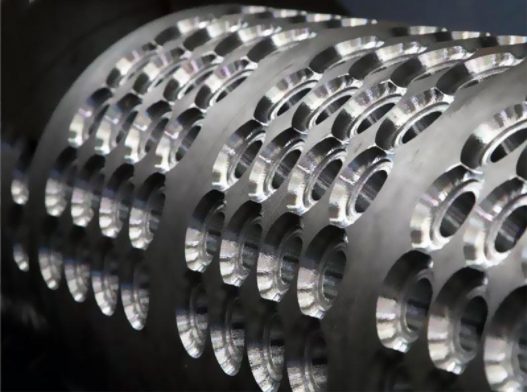
Firstly, in comparison to standard pressure vessels, boiler pressure components face more stringent working conditions and requirements. Boiler pressure steel often involves a significant number of pipe holes and intricate connections within a complex pipeline system. It is subjected to the challenges of withstanding high-temperature flue gas radiation and erosion, high wall temperatures, and a complex stress state. Due to these demanding working conditions, boilers are commonly referred to as fire pressure vessels. Given the critical nature of boiler pressure components, any failure during operation can result in severe consequences. Therefore, the materials used for manufacturing boiler pressure components must possess high strength, plasticity, toughness, fatigue resistance, and corrosion resistance. Additionally, materials for high-temperature components should exhibit favorable high-temperature mechanical properties. During the manufacturing process, raw steel materials undergo complex processing deformations and welding, necessitating good process performance from the steel used in boiler production. All materials for pressure components must comply with national standards for boiler steels. The steel's layer should ideally exhibit minimal non-metallic inclusions, pores, and other defects, with the absence of white spots and cracks.
Secondly, the mechanical properties of boiler pressure steel include strength characteristics, plasticity, toughness, and fatigue characteristics, with temperature significantly influencing these properties.
- Strength Characteristics:The strength calculation criteria for pressure steel in China are primarily based on the material's properties at room temperature (20 ℃). Tensile strength (σb) is calculated at room temperature, while the wall temperature yield strength (σst) is considered for determining the material. The basic allowable stress for high-temperature components relies on the lasting strength of steel. Endurance, or the maximum stress that does not cause creep damage after a specified working period, is a critical factor for high-temperature components. Creep is the slow plastic deformation that occurs at high temperatures, and boilers using materials such as low carbon steel, low carbon manganese steel, and low carbon vanadium steel may experience creep at temperatures above 350 ℃. The mechanical properties during creep are depicted in a typical creep curve, illustrating three stages: initial, stable, and accelerated creep. For high-temperature components, periodic creep deformation assessments are essential to determine potential fractures.
- Plastic Properties:Plasticity, expressed by elongation (δ5) and cross-sectional shrinkage (ψ), is crucial for both process performance and component strength. Materials with good plasticity are easier to process, less prone to micro-crack formation during manufacturing, and exhibit low sensitivity to stress concentration and thermal stress. Minimum plasticity values are specified in boiler steel standards to ensure the strength and quality of pressure components.
- Toughness Characteristics:Toughness measures a material's ability to absorb plastic deformation energy before fracture damage occurs. Impact toughness is a key indicator, with specific requirements for low carbon steel and low carbon manganese steel, such as a minimum Charpy impact energy of 27J at room temperature. Ensuring high toughness is vital for preventing brittle damage, and standards specify the maximum allowable impact rate decline.
- Effect of Temperature on Mechanical Properties of Materials:As temperature increases, the yield limit of various steels decreases, while tensile strength rises to a peak before declining. This peak temperature, known as the blue brittle temperature, represents a point where material strength increases, and plasticity decreases. Low carbon steel typically exhibits blue brittle characteristics at temperatures around 200 ℃ to 250 ℃. The impact of temperature on mechanical properties varies, with a low peak observed in the blue brittle temperature range.
In summary, the stringent requirements for boiler pressure components necessitate materials with robust mechanical properties, and temperature plays a significant role in influencing these properties. The understanding and adherence to these material characteristics are crucial for ensuring the safe and efficient operation of boilers.








